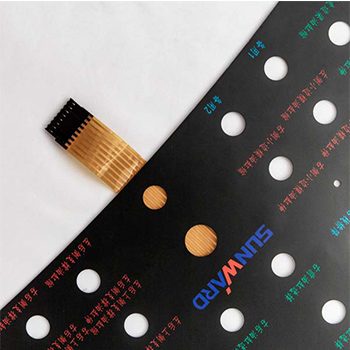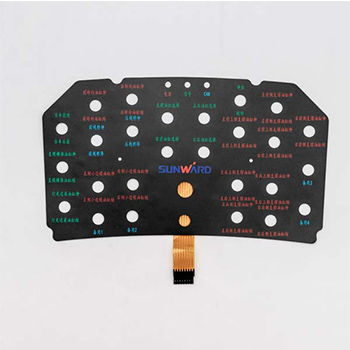
Description: Are you looking to buy a new membrane keyboard and want to know more about actuation force? This article covers everything you need to know about membrane keyboard actuation force.


A membrane keypad is a popular choice for many people because it is lightweight, affordable, and quiet. It is commonly used in offices, schools, and homes. One of the key features of a membrane keyboard is the actuation force. Actuation force refers to the amount of force that is required to press down a key and register a keystroke. In this article, we will cover everything you need to know about membrane keyboard actuation force.
Membrane keyboard actuation force is the force that is required to press down a key and register a keystroke. The actuation force of a membrane keyboard is typically measured in grams or centinewtons. A higher actuation force means that more force is required to press down a key, while a lower actuation force means that less force is required.
There are two types of membrane keyboard actuation force: tactile and non-tactile.
Tactile Membrane Switch Actuation Force: A tactile membrane keyboard has a bump or clicks feedback when a key is pressed. This type of keyboard is preferred by typists because it provides a physical confirmation that a key has been pressed. The actuation force of a tactile membrane keyboard is typically between 180g and 600g.
Non-Tactile Membrane Keyboard Actuation Force: A non-tactile membrane keyboard does not have a bump or click feedback when a key is pressed. This type of keyboard is preferred by gamers because it allows for faster typing and gaming. The actuation force of a non-tactile membrane keyboard is typically between 180g and 600g.
When choosing a membrane keyboard, it is important to consider the actuation force. Here are some factors to consider:
Typing or Gaming: If you are using the keyboard for typing, a tactile membrane keyboard may be the best option for you. If you are using the keyboard for gaming, a non-tactile membrane keyboard may be the best option.
Personal Preference: Some people prefer a higher actuation force, while others prefer a lower actuation force. It is important to consider your personal preference when choosing a membrane keyboard.
Hand Fatigue: A higher actuation force may cause hand fatigue, especially if you are typing for long periods of time. If you are prone to hand fatigue, a lower actuation force may be the best option for you.
In conclusion, membrane keyboard actuation force is an important factor to consider when choosing a membrane keyboard. Whether you are using the keyboard for typing or gaming, it is important to choose the right actuation force for your needs. By considering factors such as personal preference and hand fatigue, you can choose the perfect membrane keyboard for your specific needs. By understanding the differences between tactile and non-tactile membrane keyboards, and the various actuation force levels available, you can make an informed decision.
When shopping for a membrane keyboard from a membrane keypad manufacturer, be sure to read reviews and compare products to find the best one for your needs. With a little research and careful consideration, you can find a membrane keyboard that will provide you with a comfortable typing or gaming experience for years to come.
So, whether you're a professional typist or an avid gamer, understanding membrane keyboard actuation force is crucial to making the right choice for your needs. With this knowledge, you can make a well-informed decision and choose the perfect membrane keyboard that will enhance your typing or gaming experience.